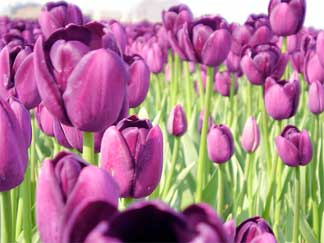As far as the gardener is concerned, the word bulb has been broadened to include tubers, corms, rhizomes, and even fleshy rooted perennials. The insurance that these plants give you is in their ability to store sufficient food to make flowering almost inevitable.
In some cases such as daffodils, tulips, and hyacinths, the flower is preformed, held in storage by the bulb. That means if you want larger number 1 flowers buy large, plump, number 1 bulbs.
In using any of the bulbs, you’ll find that you’ve got a much more effective display if you plant closely in clumps or groups than if you try to string them out in a thin row, or drop them here and there in a border. One reason why boxes and pots of daffodils and tulips are so attractive is that they are generally planted practically shoulder to shoulder in the container.

Spring-flowering bulbs should be planted in October and November with the possible exception of anemones and ranunculus which, where the soil freezes, are best planted in early spring. Gladiolus may be planted from late winter to mid-spring for a succession of bloom starting in early spring until July.
As great as the major bulbs are, they shouldn’t steal the show from the minor bulbs. Check your nursery in the fall for these charmers for early spring color:
Glory-of-the-Snow (Chionodoxa) – Best in cold climates. Blue flowers in upright clusters. Group under forsythia, spiraea.
Freesia – Tender, large flowered kind in many colors. Regular fragrant white is smaller.
Snowdrop (Galanthus) – Best in cold climates. Single white flowers. Best in woodland setting. Easy to grow and they stay put once planted.
Snowflake (Leucojum) – Hardy. Nodding white bells tipped with green. Use in preference to snowdrop in mild climates. Combine with daffodils or scillas in drifts.
Squill (Scilla) – Hardy. Many colors. Clusters of bell-shaped nodding flowers. Plant under flowering trees.
Daylilies
Maybe it should be called a perennial, but it can’t be left out of the parade of color. Spectacular new varieties have increased the color range of these dependable summer border flowers. You’ll find them in yellow, bronze, orange-copper, pink, rose, and red. Will grow in sun or part shade. Plant clumps in fall or early spring. They do well everywhere.
